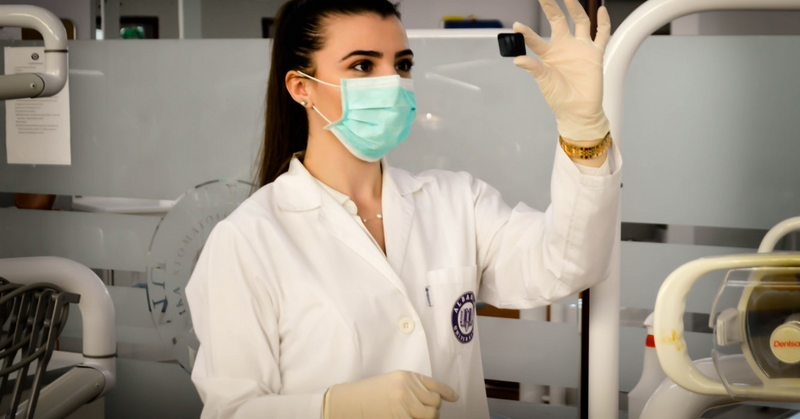ATD Blog
Shifting Trends for Healthcare Trainers Amidst COVID-19
Wed Apr 01 2020

Bookmark
As COVID-19 has brought changes to each of our daily lives, major functions of provider spaces have had to adapt and shift prioritization. The unique juxtaposition of needing increased healthcare resources for patient care while also trying to decrease the spread of the virus amongst individuals pegs the need for reformed training within the industry. Like a domino effect, each key operation affects the others and provides new training opportunities for healthcare employees at varying levels.
Emergency Preparedness: Changing Demands for Hospital Workforce
As health systems rush to find space for the influx of incoming patients, differing requirements are at play for clinical versus nonclinical staff.
Staffing companies for health systems are posting more than 1,000 crisis jobs to handle the demand for patient care (including increasing demands for registered nurses and respiratory therapists specifically) and some states are waiving physician licensing requirements to allow for more doctors and caregivers to travel to where need may lie.
Meanwhile, nonclinical employees are now teleworking to limit exposure to the virus within hospital premises. As of two weeks ago, Highmark Health had 8,000 of 35,000 employees working remotely—including customer service, IT, and logistical team members. As other health systems also have a large percentage of their workforce teleworking, logistics have to be ironed out, such as resources for effective productivity (procuring laptops, ensuring functional IT systems) for jobs that have typically not been done virtually before.
There are two contrasting training urgencies for hospital employees—meeting increased in-person demand for frontline professionals (along with training them for increased shifts in high-stress situations) while maintaining hospital proceedings and business with virtual departments.
Telemedicine
Although telemedicine has been used increasingly in the past few years, there is an acute requirement for it now to need to keep patients and other doctors safe, with little-to-no exposure to infected individuals. Doctors have begun virtually meeting with patients for check-ups and consultations for COVID-19 patients as well as for other scheduled appointments. Bergen New Bridge Medical Center has implemented telemedicine “carts” that allow clinicians to roll video cameras and other equipment into a patient’s room so a consultation could successfully be conducted without being at the patient’s bedside. Outside of COVID-19 consultations, doctors are virtually holding other check-ups to ensure patients aren’t in shared spaces.
Interestingly, there is an uptick in telemedicine demand for psychological care. Social distancing and self-quarantining paired with looming stress over a pandemic is a recipe for volatility as individuals try to cope with stress and anxiety. And those with existing mental health conditions require regular appointments and check-ins to maintain their well-being.
Until now, telemedicine was being used as an optional “convenience” by providers and patients alike; however, it is quickly becoming the preferred (if not sometimes primary) method for non-emergency situations.
Digital Transformation
The increased use of telemedicine is an example of larger digital transformation occurring within health systems. CIOs are re-evaluating existing IT systems and implementing new workflows in preparation for having potentially limited staff and resources in the weeks to come—including enhanced digital dashboards for faster triage (for instance, having a single source with all patient data so doctors can screen efficiently) and testing and troubleshooting technology so employees can effectively work remotely.
St. Luke’s University Health Network is currently revamping their videoconferencing tools to better assist patients from varying demographics to ensure the most accessible patient experience—in addition to videoconference options on cellular platforms for younger consumers, they are working on making it accessible from desktop locations, for older populations’ convenience as well. Now more than ever (and moving forward into our digital future), training employees on technological literacy will be a necessity to keep hospital business thriving while also catering to consumer needs.
COVID-19 has forced health systems to change their strategies rapidly, requiring trainers to revamp material on the clock as the situation continuously evolves and unfolds. However, it poses great opportunity for longer-term growth and new trends in the industry, allowing us to build and restructure training programs for better emergency preparedness in the future. Telemedicine and digital transformation were already trending but have now become a necessity rather than a mere convenience. This is the healthcare trainer’s time to shine, to be innovative, and to make meaningful impact through change management, leadership management, and virtual training, to help health systems flourish, and provide the best care within our communities.
Sources
Telemedicine
Demand for Remote Psych Care Soars As Coronavirus Anxiety Mounts
Coronavirus Prompts Hospitals to Fast-Track Telemedicine Projects
Emergency Preparedness
